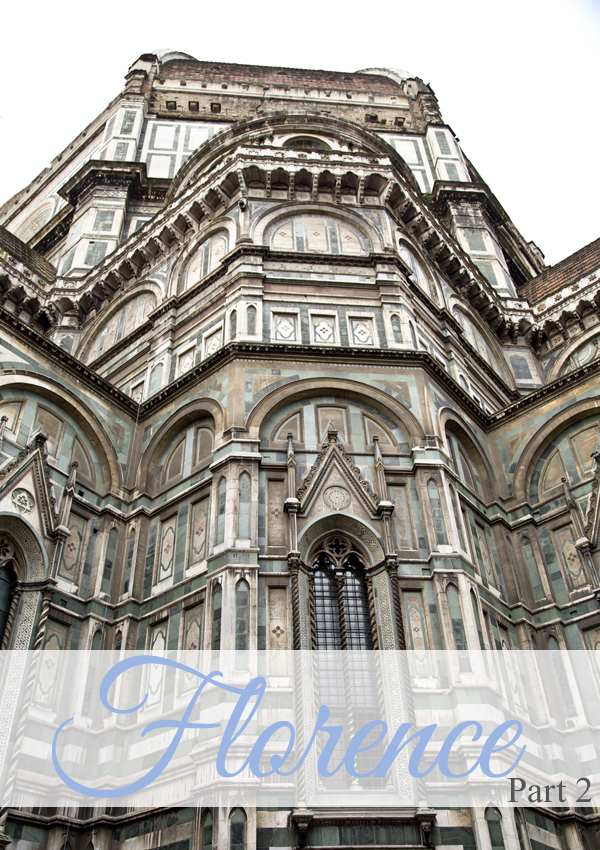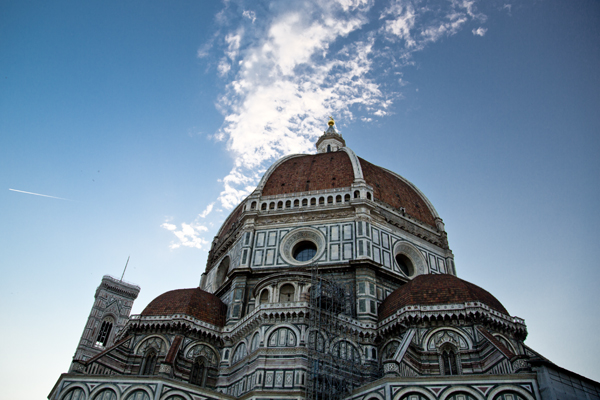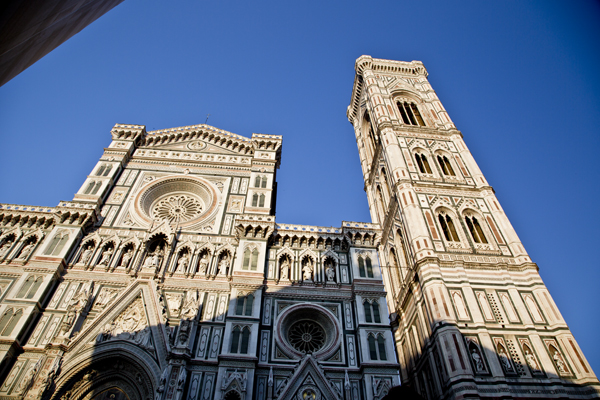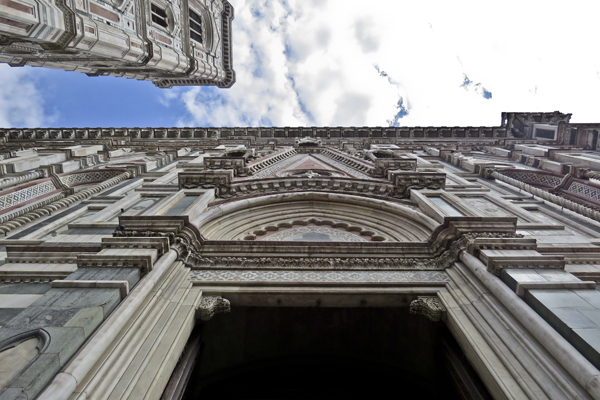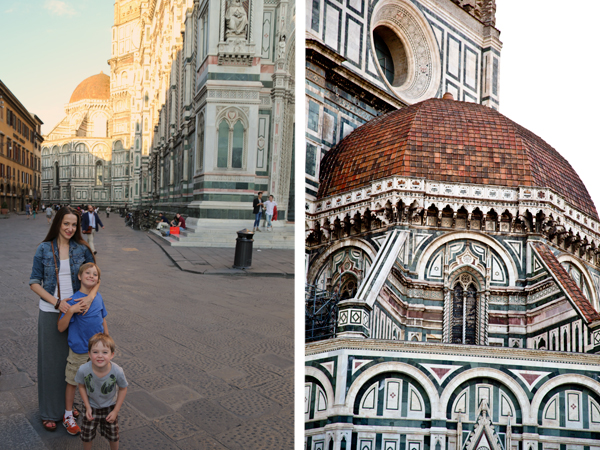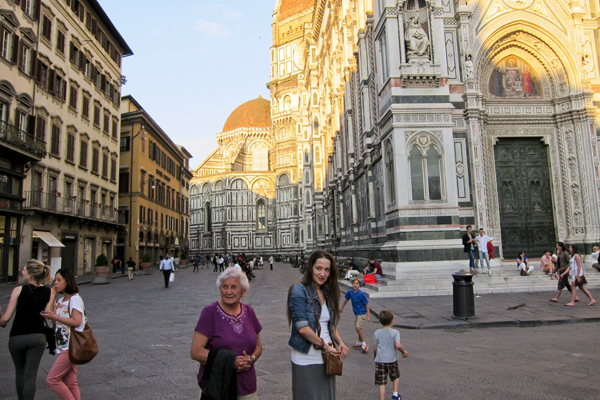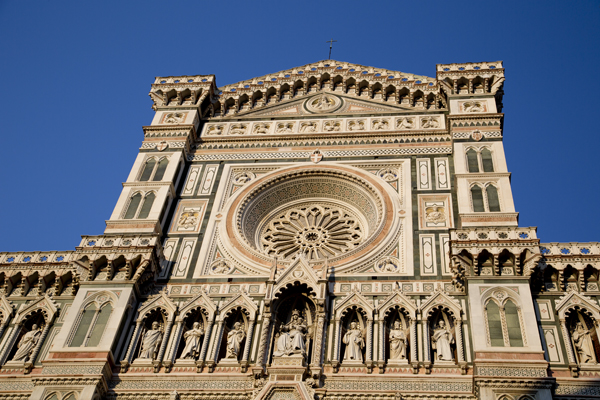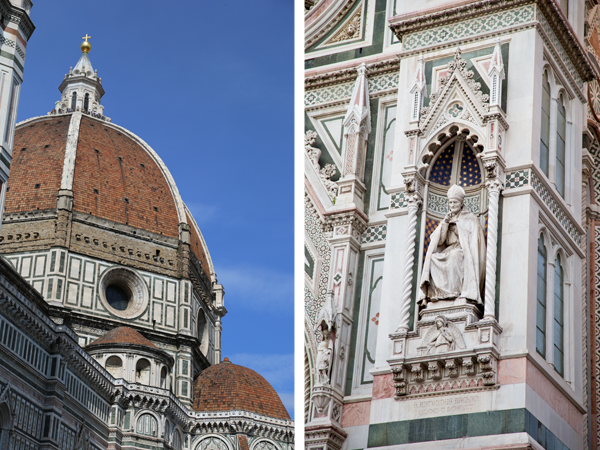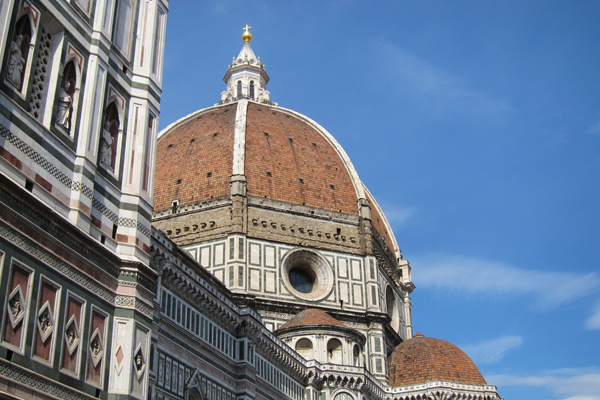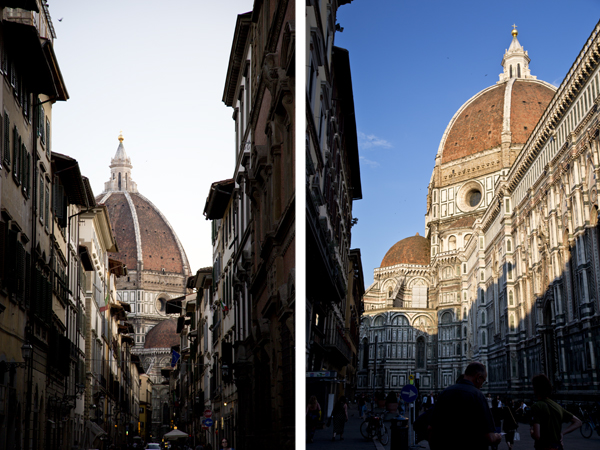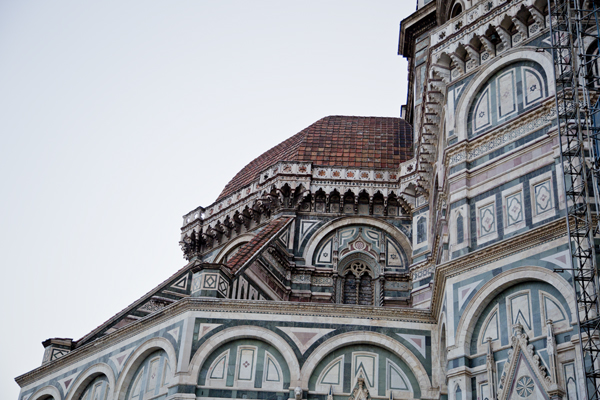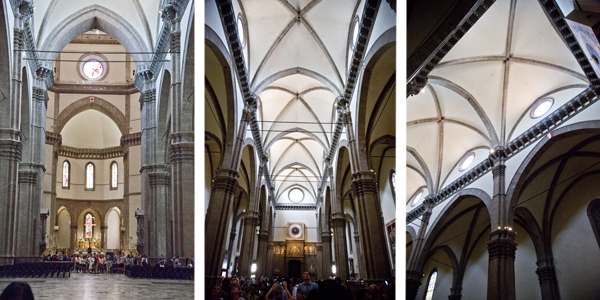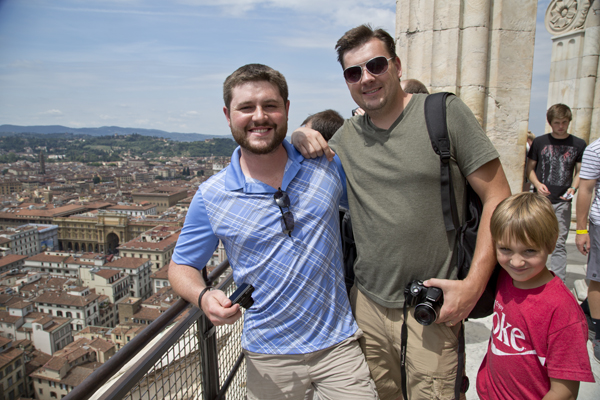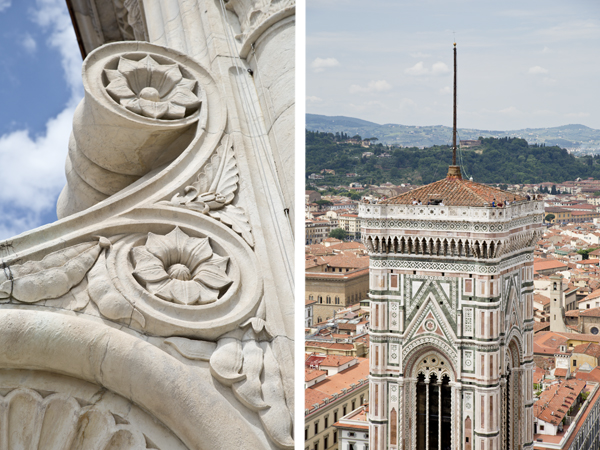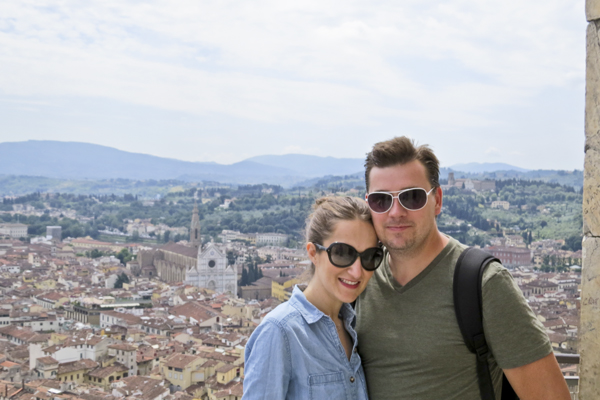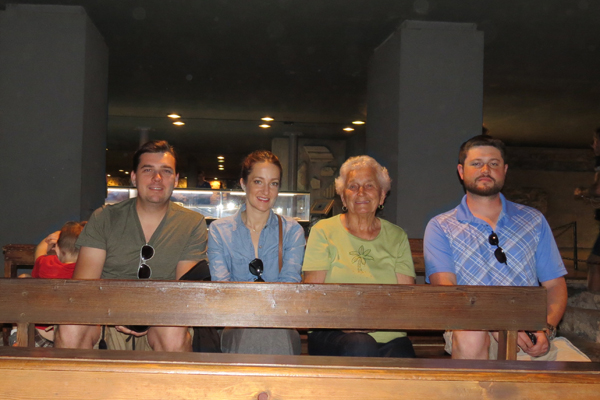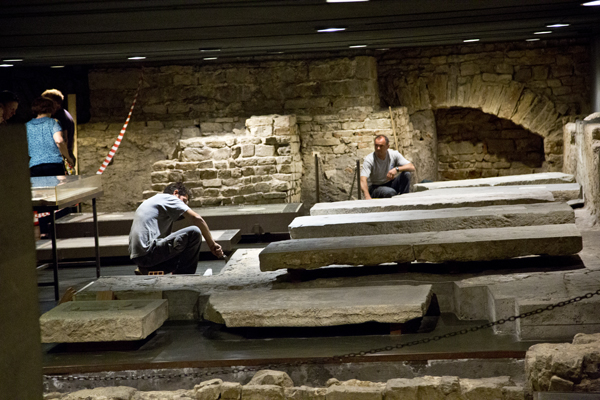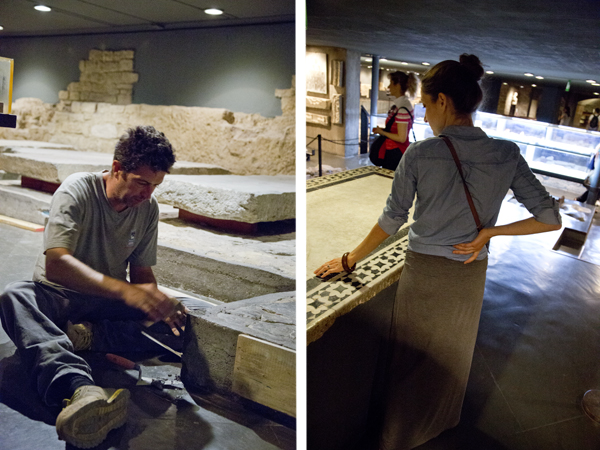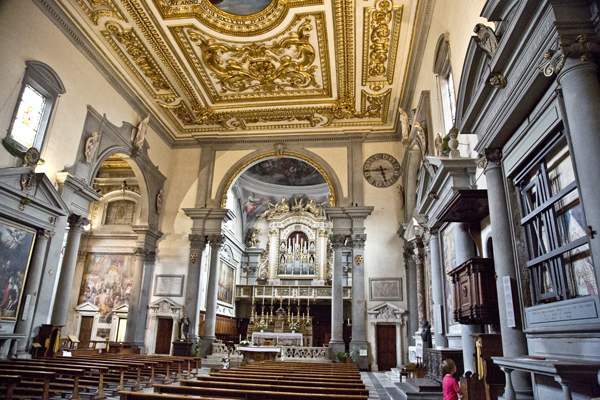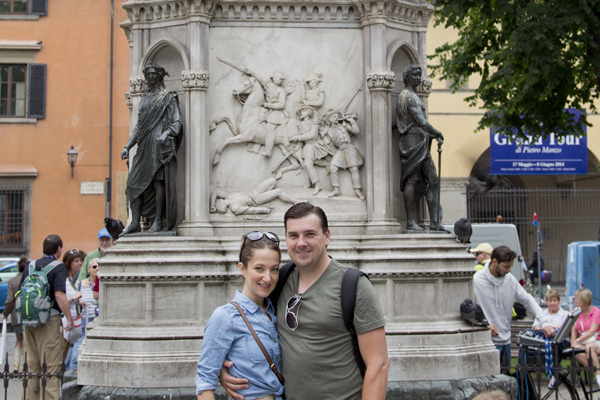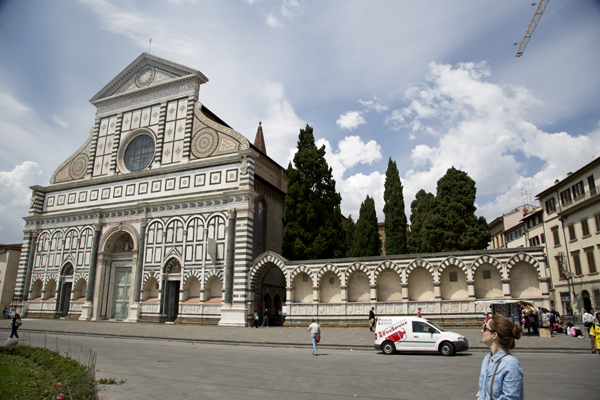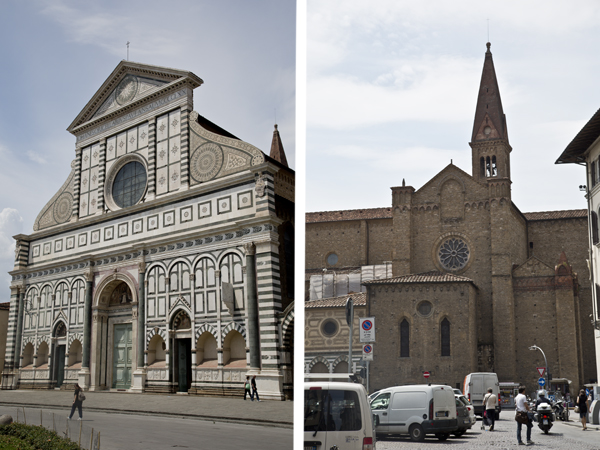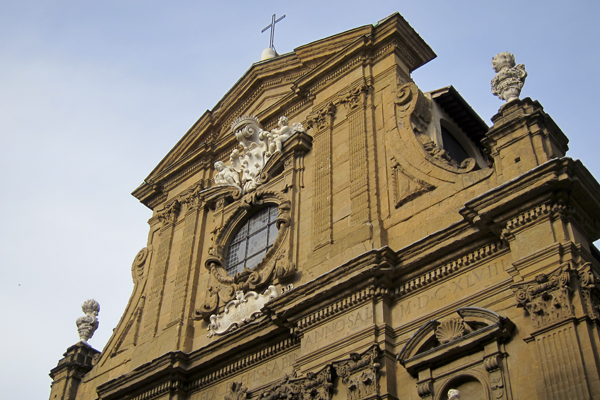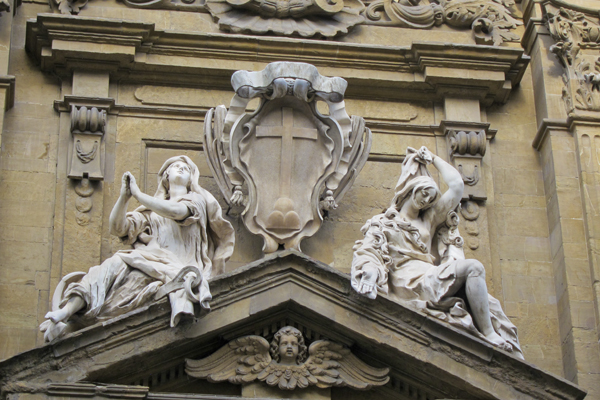When my oldest was small, one of the bestselling video games on the market was Assassin’s Creed II. David played it all the time and my son would often watch (the video game isn’t exactly kid friendly, so David often replayed “safe” parts of the game so our son could watch). During this time, I would take my son to the park and he would run around with his t-shirt pulled up over his head to look like he had a hood (if you watched Bevis and Butthead, he wore it like they do when they did their whole “Great Cornholio” number). When people asked why he wore his shirt like that, he would say “because I’m Ezio from the daddy game.” The daddy game, of course, being Assassin’s Creed II
.
I know that right about now you’re asking yourself what in the world this video game could possibly have to do with Florence – A lot actually. You see, a good portion of Assassin’s Creed II takes place in Florence and the surrounding area. You play as Ezio Auditore da Firenze and, through his Renaissance era quests, you explore the city (as well as many others) and you learn quite a bit about Italian history and historical figures (my son could tell you all about the Medici family, Leonardo da Vinci, Machiavelli and the Borgia family to name a few). The game developers did an excellent job of not only accurately portraying major tourist landmarks, but of representing the city as a whole. There is actually a cool Buzzfeed article on the historically accurate aspects of the game. As a huge fan of the game, you can imagine my son’s awe and wonder as we meandered down the actual streets that he had roamed virtually so many times before. I think that the game played a huge role in his desire to visit Italy in the first place and while I do try to limit his video game intake, I think that it is really cool that a game can spur such a keen interest in history.
Anyway, back to Florence…
One of the key landmarks in the game is the Duomo or Il Duomo di Firenze, which is what everyone calls the city’s famed Basilica di Santa Maria del Fiore. It is by far Florence’s most prominent landmark and is considered one of Italy’s “big three” (the other two being the Leaning Tower of Pisa and Rome’s Coliseum). I don’t even know where to begin. We have hundreds of pictures of the exterior of the Duomo alone. I am not exaggerating when I say that we were completely amazed by this building, both inside and out. We saw some pretty impressive landmarks on this trip and the Duomo certainly holds a place at the top of that list.
The exterior of the Duomo is a wonder! I have seen a lot of beautiful things in my lifetime but very few of them have truly taken my breath away. This was definitely one of them. I don’t even know where to begin. The detailing in everything from the doors to the statues or even the placement of tiles and the masonry and engineering involved in creating the dome is absolutely astonishing. The amount of work that had to go into building a structure of this magnitude is mind boggling! This building is remarkable from every single angle. We would be walking down the street and come around a corner revealing a new view of Il Douomo and we would be awestruck all over again.
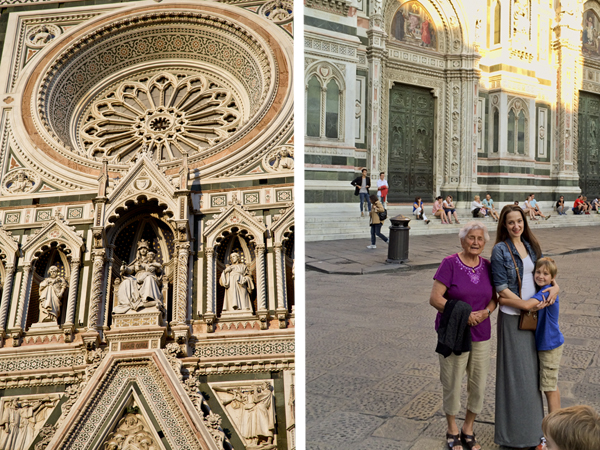
A closer look at the Rose window and the statue of Mary and another posed shot in front of the Basilica.
The gothic interior of the cathedral is quite stark when compared to many of the other churches we visited (and from what you would expect after seeing the exterior). It is actually the simplicity of the walls and ceilings that allows you to really appreciate the works of art that they do have on display; especially the fresco adorning the underside of the dome and the forty-four stained glass windows throughout the cathedral. I honestly could have spent all day in this church. It was lovely.
Of course, I was with a bunch of restless boys, so instead of sitting and taking in the beauty around us for hours on end, we were off to do some more exploring. As much as David hates heights, he was not about to miss out on climbing to the top of the dome and seeing the 360 degree views of the city. Getting to the top of the dome requires that you take a narrow spiraling staircase containing between 414 and 463 steps (depending on where you check on the internet). The stairs are not in any way uniform and some of the passageways are so narrow that you have to turn sideways to fit. There are also sections that serve people traveling both up to the dome and back down and those spots can get a little tricky (especially since there are no railings and the incline is fairly steep). Thankfully no one fell while we were there, but there were a couple of stumbles and close calls and we were very thankful that none of us is overly claustrophobic because we were in some seriously tight situations. Climbing the dome is exhausting any time of year but we were doing it in the middle of a heatwave so the air was dense and at times almost unbearable. In the end, the view was well worth the climb. After looking down on the city from above I have come to the conclusion that Florence does not have a bad angle.
Another huge draw of the Duomo is what lies beneath. In the 1960s excavations beneath the cathedral uncovered the remains of Santa Reparata, an early Christian cathedral built in the fifth and sixth centuries soon after Christianity was accepted as the official religion of the Roman Empire. Everything about the church was fascinating – the ancient relics, the mosaic floors, ancient tombs, and the overall architecture. It was also extremely interesting to watch a group of archeologists as they continue in their excavation and restoration of the church.
Il Duomo isn’t the only interesting church in Florence. San Marco is a religious complex in Florence consisting of a church and a convent, the latter of which now serves as a museum. Located in Piazza San Marco, not far from the Galleria dell’Accademia, or simply the Accademia (where you’ll want to go to see the Statue of David), San Marco was well worth a visit to see all of the artwork as well as the church’s overall design and detailing. The Piazza San Marco is a lovely square and home not only to the church and museum but also the statue of Manfredo Fanti, a freedom fighter and a hero of the Italian Resurgence.
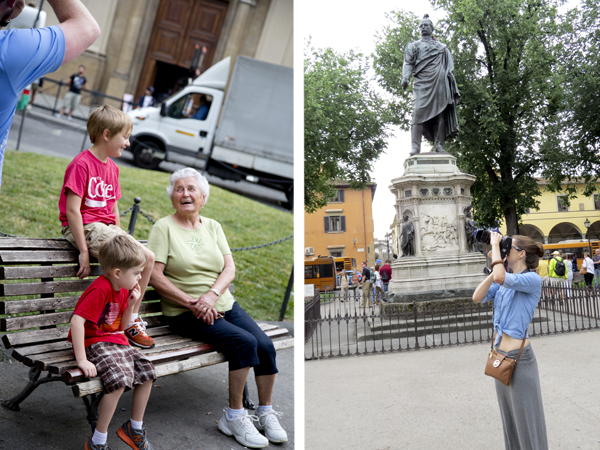
the boys and Dédi sit in Piazza San Marco and me taking a picture in front of the statue of Manfredo Fanti
After having lunch one afternoon we were wandering through the city when my son exclaimed, “That’s the other church in Assassins Creed!” The church he was referring to was Basilica di Santa Maria Novella. It really stuck out because the façade has such a different style than the rest of the church. A fun fact about the façade is that itnwas created by Leon Battista Alberti in 1470, which I found interesting because Leon Battista Alberti is referenced in Renaissance Man, one of my all-time favorite movies. It was the first great basilica in all of Florence and it is especially famous for its gothic and renaissance frescoes. I wish that we would have had more time in Florence to properly tour the church. Oh well, I’ll just have to do it next time.
There were so many churches in Florence, that we could have spent all of our time doing nothing but church tours, but alas, little boys can only visit so many churches before they become irritable (and we didn’t want to burn them out before we made it to the Vatican on the Rome leg of our trip). Plus, if you spend too much time in the churches, you’ll run out of time for all of the other museums, squares and landmarks in this gorgeous city. There was another church that caught our eye when David, Mat and I went out alone one afternoon. Santi Michele e Gaetano, which is located in the Piazza Antinori, is absolutely beautiful and was built with support of several noble families including the Medicis. Cardinal Carlo de’Medici’s name is inscribed on the façade.
